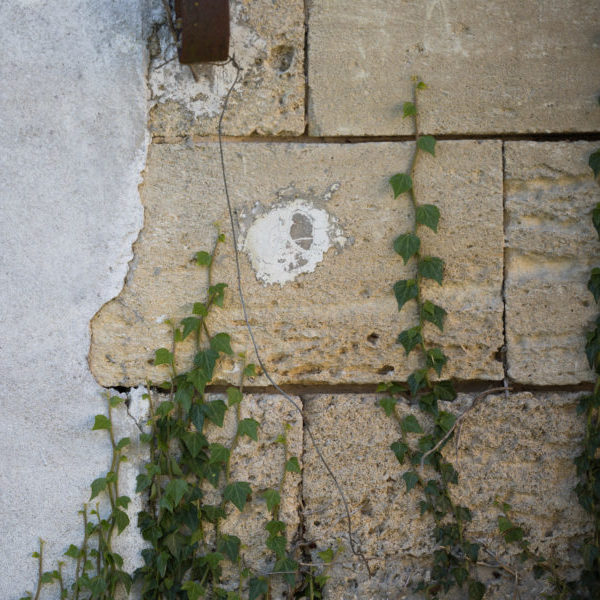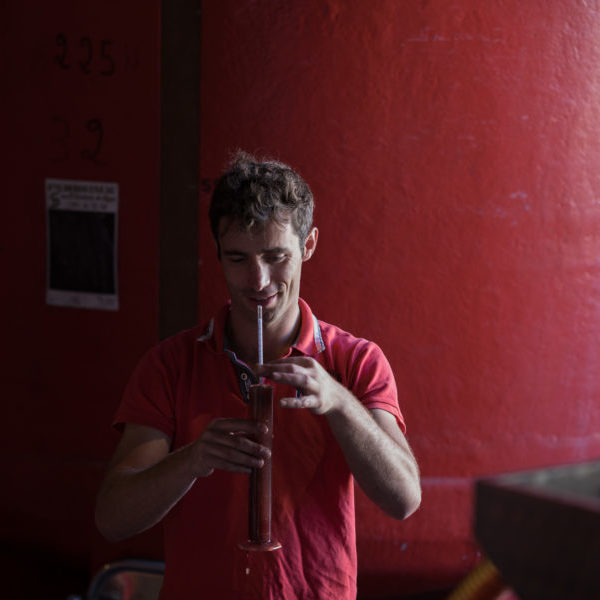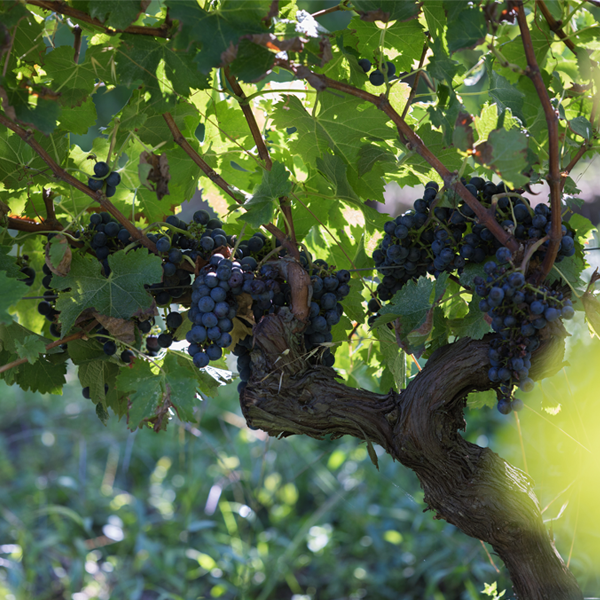From cereal to vine
A family heritage
Le Moulin de Rioucreux has been in my family since the 17th century. First dedicated to milling and polyculture, the windmill was destroyed in 1850 and the miller's house was transformed into a cellar. At the beginning of the 20th century, wooden tanks were replaced by concrete tanks. The cultivation of the vine the becomes the main crop.
My grandfather bought the vines of the Moulin des Blaisin 1982, in the Côtes de Bourg region. In 1985, my parents took over the vineyard, which grew from 10 to 18 hectares in ten years. In 1995, a more modern cellar with fibre vats replaced the old one. The concrete vat room is preserved, geese are raised for the sale of homemade foie gras.
The vineyard has been gradually restructured around 5 000 vines / ha (compared to 3 200 previously), with more qualitative rootstocks. The production of white wines is stopped, the reds are sold to the wine merchant and to private consumers. From the 2000's, weed control was limited, soils were partly worked by hand and diseases were treated with contact products, without anti-botrytis.

From Blaye to Hawke's Bay

A comprehensive agricultural vision
After completing an IUT in General Agronomy and an Engineering School of Agricultural Works, I obtained a degree in oenology and went on to gain experience in wine-making: Institut français de la Vigne, Bordeaux merchant, cooperative cellar in Auvergne, vinification in Ribatejo in Portugal and then at Château Mouton Rotschild in 2009.
The following year, I went to Hawke's Bay in New Zealand, famous for its "Bordeaux Blends", blend of Merlot and Cabernets. After a tour of the South Island and a tasting of the Otago's Pinots noirs, I came back to follow 19 winegrowers in the middle of the harvest for a labotary in the Entre-deux-Mers region.
I met Jean Crampes from Château Gayon, a vineyard engaged in sustainable agriculture under the Terra Vitis label. I've work there for two years and a half, managing the wine cellar from vinification to bottling, focusing on the sale aspects. A great experience in a domain where the range of wines covers six wines for six differents appellations.
From earth to the glass
A biological dynamics
I was preparing with my parents for the takeover of the vineyard in 2013. The transition to organic agriculture is quickly implemented: 10 hectares are committed to conversion in the summer. Three months later, we bought vines of a neighbour who had been organic for 30 years. On January 1st, 2014, I officially took over the vineyard.
From my experience here and elsewhere, I have learned that there are very different ways of making wine, more or less close to the vine and the consumer, that passion often makes the difference, and that only patience, in the vineyard as in the cellar, makes it possible to build sustainable things.
The conversion of the vineyard to organic agriculture is in line with our times. It is a global and forward-looking approach that brings us closer to our consumers every day. It has allowed us to create a better working environment in the vineyard, and to produce wines made from healthy grapes.
— Guillaume Guérin

